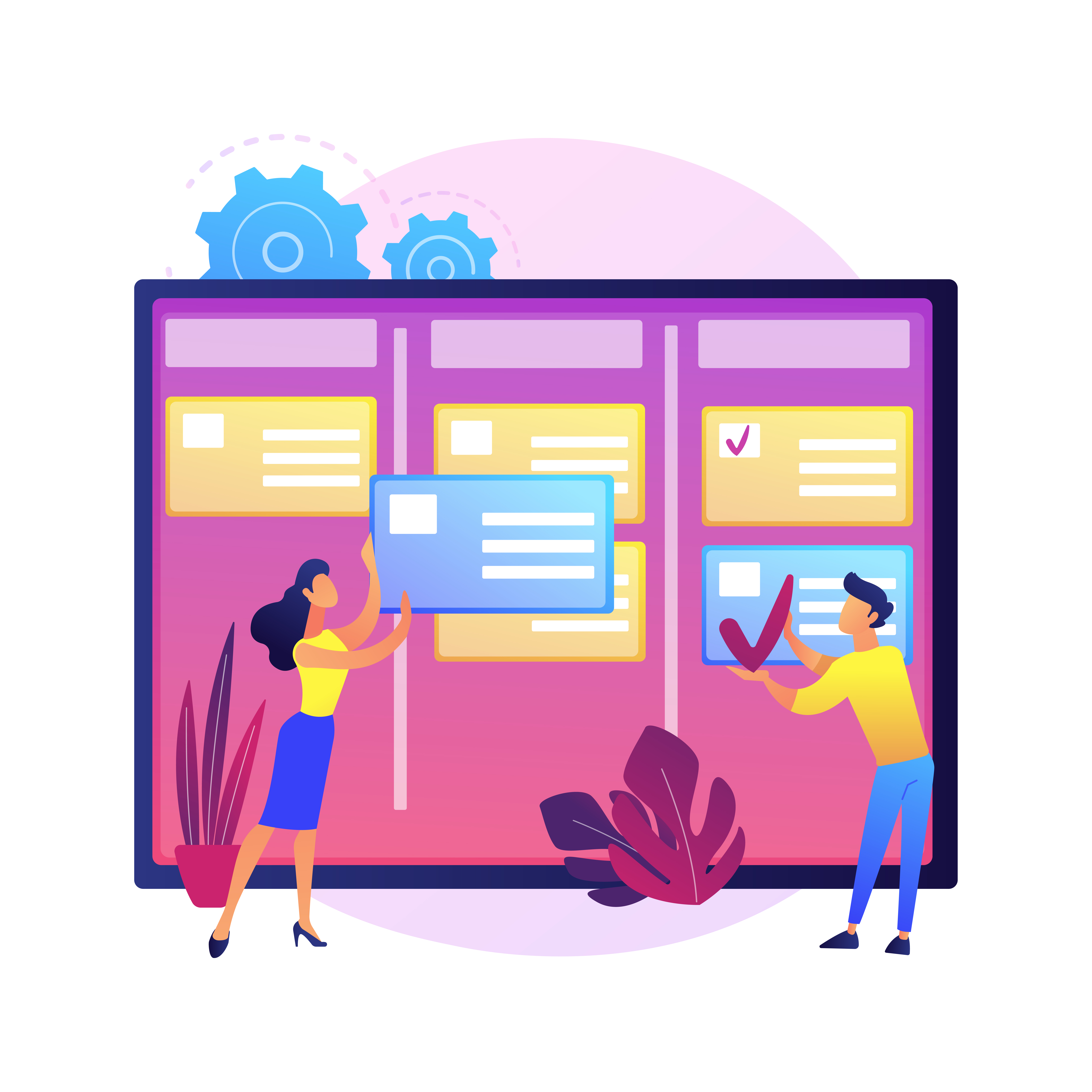The evolution of task management has seen a remarkable transformation from manual systems to advanced digital solutions. Among these, the Tcard board system has undergone a significant metamorphosis, adapting to the needs of modern businesses. This blog explores the journey from traditional manual Tcard boards to contemporary digital Tcard software, highlighting the benefits and advancements that have revolutionized task management.

The Origins of Tcard boards
Tcard boards, short for task cards, originated as a simple yet effective visual management tool used to track tasks and workflows. In their traditional form, Tcard boards consisted of physical boards with slots for individual task cards. Each card represented a specific task or piece of work, and the board itself was divided into sections representing different stages of a workflow, such as "To Do," "In Progress," and "Completed."
These manual Tcard boards were popular in various industries, from manufacturing to office environments, due to their simplicity and visual appeal. They allowed teams to quickly see the status of tasks at a glance, making it easier to manage and prioritize work. However, despite their benefits, manual Tcard boards had several limitations.
Limitations of Manual Tcard boards
- Physical Constraints: Manual Tcard boards were limited by physical space. As projects grew in complexity and the number of tasks increased, the boards could become cluttered and difficult to manage. Additionally, the physical nature of the boards meant they were confined to a specific location, restricting accessibility for remote or distributed teams.
- Lack of Real-time Updates: One of the major drawbacks of manual Tcard boards was the inability to provide real-time updates. Task statuses had to be manually updated, which could lead to delays and miscommunication. Team members had to be physically present to see the latest information, making it challenging to keep everyone on the same page.
- Limited Collaboration: While manual Tcard boards facilitated basic collaboration, they lacked advanced features that modern teams require. Collaboration was often limited to discussions held in person near the board, making it difficult for remote team members to contribute effectively.
- No Data and Analytics: Manual Tcard boards did not offer any way to track performance metrics or analyze data. Managers had to rely on visual inspections and manual counting to gauge progress, which was time-consuming and prone to errors.
The Shift to Digital Tcard boards
The advent of digital technology brought about a revolution in task management, leading to the development of digital Tcard software. This transition addressed many of the limitations of manual Tcard boards and introduced a range of powerful features that enhanced task management in significant ways.
Key Features of Digital Tcard Software
- Real-time Updates: Digital Tcard software allows for real-time updates, ensuring that all team members have access to the latest information. Tasks can be updated instantly, reducing delays and improving communication. This feature is particularly beneficial for remote and distributed teams.
- Enhanced Accessibility: Unlike manual boards, digital Tcard software is accessible from any device with an internet connection. Whether team members are in the office, working from home, or on the go, they can access and update the Tcard board. This flexibility is crucial in today’s dynamic work environment.
- Advanced Collaboration: Digital Tcard software offers a range of collaboration features, such as commenting, tagging, and file sharing. Team members can discuss tasks, provide feedback, and share documents directly within the software, fostering better collaboration regardless of location.
- Automation and Integration: One of the standout advantages of digital Tcard software is its ability to automate repetitive tasks and integrate with other tools. Automated notifications, task assignments, and integration with project management tools like Trello or Asana streamline workflows and reduce manual workload.
- Data and Analytics: Digital Tcard software provides valuable insights through data and analytics. Managers can track performance metrics such as task completion rates, average time spent on tasks, and identify bottlenecks in the workflow. This data-driven approach enables continuous optimization of processes.
Benefits of Digital Tcard Software
- Improved Efficiency: The combination of real-time updates, enhanced organization, and automation leads to significant improvements in efficiency. Teams can work more cohesively, with a clear understanding of what needs to be done and by when, reducing delays and increasing productivity.
- Better Collaboration: Digital Tcard software fosters a collaborative work environment. Team members can easily share updates, leave comments, and provide feedback on tasks. This collaborative nature ensures that everyone is aligned and working towards common goals.
- Greater Accountability: With digital Tcard software, it is easier to assign tasks and track progress. Team members know their responsibilities, and managers can quickly see who is working on what. This transparency increases accountability and ensures that tasks are completed as expected.
- Scalability: As your organization grows, so do your task management needs. Digital Tcard software is highly scalable, allowing you to manage more tasks, projects, and team members without losing efficiency. You can also customize the software to fit the unique needs of your organization.
- Environmental Impact: By moving to a digital system, you reduce the need for paper and other physical materials, contributing to a more sustainable and environmentally friendly workplace.
Conclusion
The evolution from manual to digital Tcard boards marks a significant advancement in task management. Digital Tcard software has transformed the way teams work, offering real-time updates, enhanced accessibility, advanced collaboration, automation, and data analytics. These features not only improve efficiency and collaboration but also provide the scalability and flexibility needed in today’s dynamic work environments. Embrace the evolution of Tcard boards and experience the transformative impact on your task management processes.